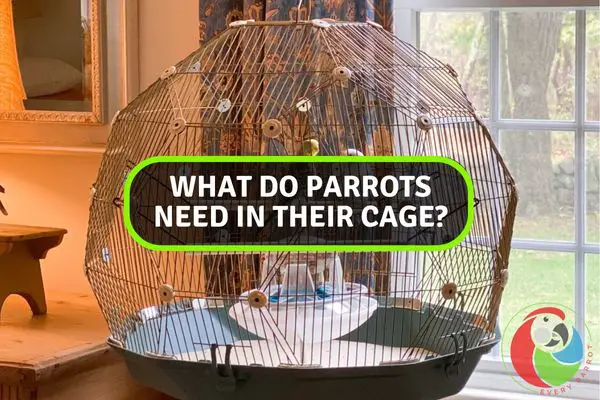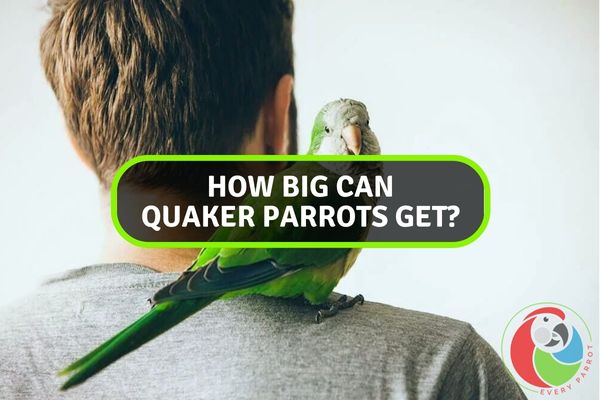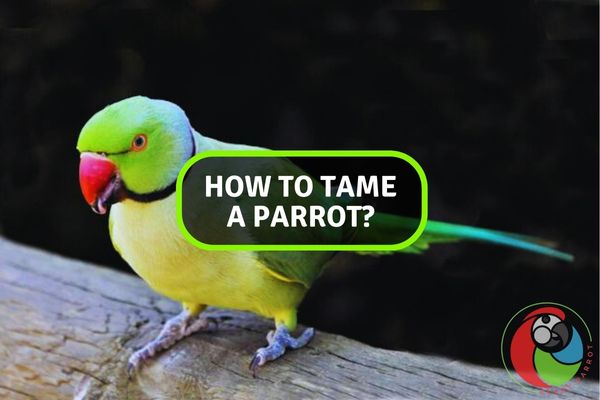Why Are Quaker Parrots Illegal?
The ban on Quaker parrots, also known as monk parakeets, stems from concerns over their potential impact on local ecosystems and agriculture. Native to South America, these charismatic birds have established feral populations in various regions, posing a threat to native flora and fauna. Their communal nesting habits and adept foraging skills make them formidable competitors for resources.
In addition, Quaker parrots are notorious for building large, intricate nests on utility poles, causing safety hazards and power outages. To mitigate these ecological and infrastructural risks, several countries and regions have implemented restrictions on the ownership and trade of Quaker parrots.
While appreciated for their intelligence and charm, these birds’ invasive tendencies have led to their prohibition in certain areas to safeguard the environment and public welfare.

Overview of Laws Governing Quaker Parrots
Quaker parrots are considered an invasive species in parts of the United States and Europe. As such, various laws and regulations have been enacted over the years restricting or prohibiting their importation, sale, and possession.
For instance, the U.S. has federal laws banning interstate transport and import of Quaker parrots. As well as, multiple states including California, Georgia, Kansas, Kentucky, Hawaii, New Jersey, Pennsylvania, Tennessee, Wyoming, and Virginia have instituted statewide bans.
Regions Where Quaker Parrots Are Illegal
Currently, Quaker parrots are illegal to own as pets in over half the states in America. Most Midwest and Eastern states have outlawed private ownership, with exceptions for zoos or sanctuaries in some cases. Western states like California also prohibit Quaker parrots.
Certain cities including Chicago and Cincinnati have municipal codes banning monks parakeets. Outside the U.S., Italy, UK, Belgium, and Australia have restrictions on monk parakeets.
Events Leading to Legal Restrictions
Quaker parrots were first imported to the United States as pets in the 1970s. However, after escaped birds began establishing wild breeding populations, particularly in the Northeast and Midwest, authorities grew concerned.
The birds’ nesting habits were seen as a threat to electricity infrastructure and agriculture. These mounting worries over ecological impact and crop damage prompted states to start introducing legislation against Quaker parrots in the 1990s and 2000s.
Past Incidents and Concerns
High-profile incidents involving Quaker parrot nests damaging utility equipment strengthened the case for bans. In Chicago, monk parakeet nesting on transformers led to fires and power outages.
Nests blocking ventilation caused overheating in utility systems from Connecticut to Texas. These hazardous electrical issues provided evidence for policymakers to prohibit Quaker parrots. There were also fears of competition with native birds and agricultural crop losses, though limited in scope.
Environmental Concerns-Introduction of Non-Native Species
Quaker parrots originate in the temperate and subtropical regions of South America. Introducing this non-native species to North America and Europe risks upsetting local ecosystems. When any foreign bird is released in a new habitat, it faces little natural predation. Thus, released pets can multiply and spread aggressively.
Environmental Concerns-Impact on Local Ecosystems
While Quaker parrots cause minimal agricultural damage, their cavity-nesting habits do pose concerns. They compete with native birds for nesting sites, favoring man-made structures.
But evidence suggests Quaker parrots living in urbanized environments have limited impact on native species populations. Still, releasing non-native birds can potentially displace local species reliant on the same resources.
Controversies Surrounding Quaker Parrots
There are several controversies surrounding quaker parrots.
Debates Among Experts
- Arguments for Legalization
Some ornithologists argue for lifting bans on Quaker parrots as pets. They claim that in urban environments, monk parakeets cause minimal ecological damage. Well-managed captive populations may not spread invasively. Furthermore, proponents view the emotional bonds owners form with their parrots as worth considering.
- Arguments Against Keeping Quaker Parrots as Pets
Many conservationists advocate keeping bans in place. They view even localized impacts on native cavity nesters as unacceptable disruption of local ecosystems. Preventing additional breeding populations from establishing is crucial. Moreover, the tendency of released pets to form feral colonies remains worrying, regardless of current population levels.
Public Perception
- Opinions from Bird Enthusiasts
The prospect of legalized Quaker parrot ownership excites many aviculturists and bird lovers. To them, the vibrant personalities and intelligent behaviors of monk parakeets make them ideal companions. Some believe captive-bred parrots are innocuous, assigning blame for wild colonies solely on irresponsible owners. They argue captive breeding reduces pressure on wild Quaker parrot populations.
- Social Media Discussions
Passionate debate continues online among parrot enthusiasts. Some defend bans as prudent protection of indigenous species. Others call for amended policies allowing captive-bred Quakers with permits. Both sides share a love for these clever, charismatic parrots. Yet perspectives diverge on how to balance their conservation status with interest in keeping them as pets.
Legal Loopholes and Exceptions
- Regions Where Quaker Parrots Are Permitted
Despite nationwide restrictions, Quaker parrots remain legal in some U.S. states including Alaska, North Dakota, and Oregon. Certain municipalities such as Tucson, Arizona also allow ownership with permits. These regions still monitor monk parakeet populations closely but take a more permissive stance. Europe has a mosaic of policies – from bans in Belgium to no restrictions in Spain and the UK.
- Licensing and Permitting Processes
Some areas allow Quaker parrot ownership under tight regulation. Arizona issues permits for captive-bred monks vetted for diseases. Louisville, Kentucky requires microchipping for identification. These examples demonstrate ways to allow responsible monks parakeet ownership while limiting environmental risk. Permits, inspections, and registration mandates create higher ownership barriers to dissuade casual owners.
Advocacy for Responsible Ownership
- Educational Initiatives
Grassroots campaigns promoting responsible parrot care gain traction. Enthusiasts publicize proper housing, veterinary needs, specialized nutrition, and behavioral enrichment required for Quaker parrots. Advocates believe that educating prospective owners reduces improper release risk. Outreach efforts also include re-homing programs for owners unable to continue caring for parrots.
- Best Practices for Quaker Parrot Owners
Experts recommend several techniques to curtail accidental escape. Trimming flight feathers, microchipping, and housing parrots in secure indoor aviaries are vital. Building outdoor enclosures with protected wiring and roofing helps prevent chewing-related damage. Owners should have disaster plans prepared in case severe weather or emergencies necessitate quickly recapturing escaped birds.

Conclusion
The prohibition of Quaker parrots stems from concerns about their potential impact on local ecosystems. Their nesting habits and adaptability have raised alarms about potential disruptions to native bird species and agriculture.
While these intelligent and charming birds make popular pets, their ability to establish feral populations in non-native regions has led to regulatory measures. Balancing conservation efforts and pet ownership remains a challenge, necessitating careful consideration of the ecological consequences associated with these colorful avian companions.








